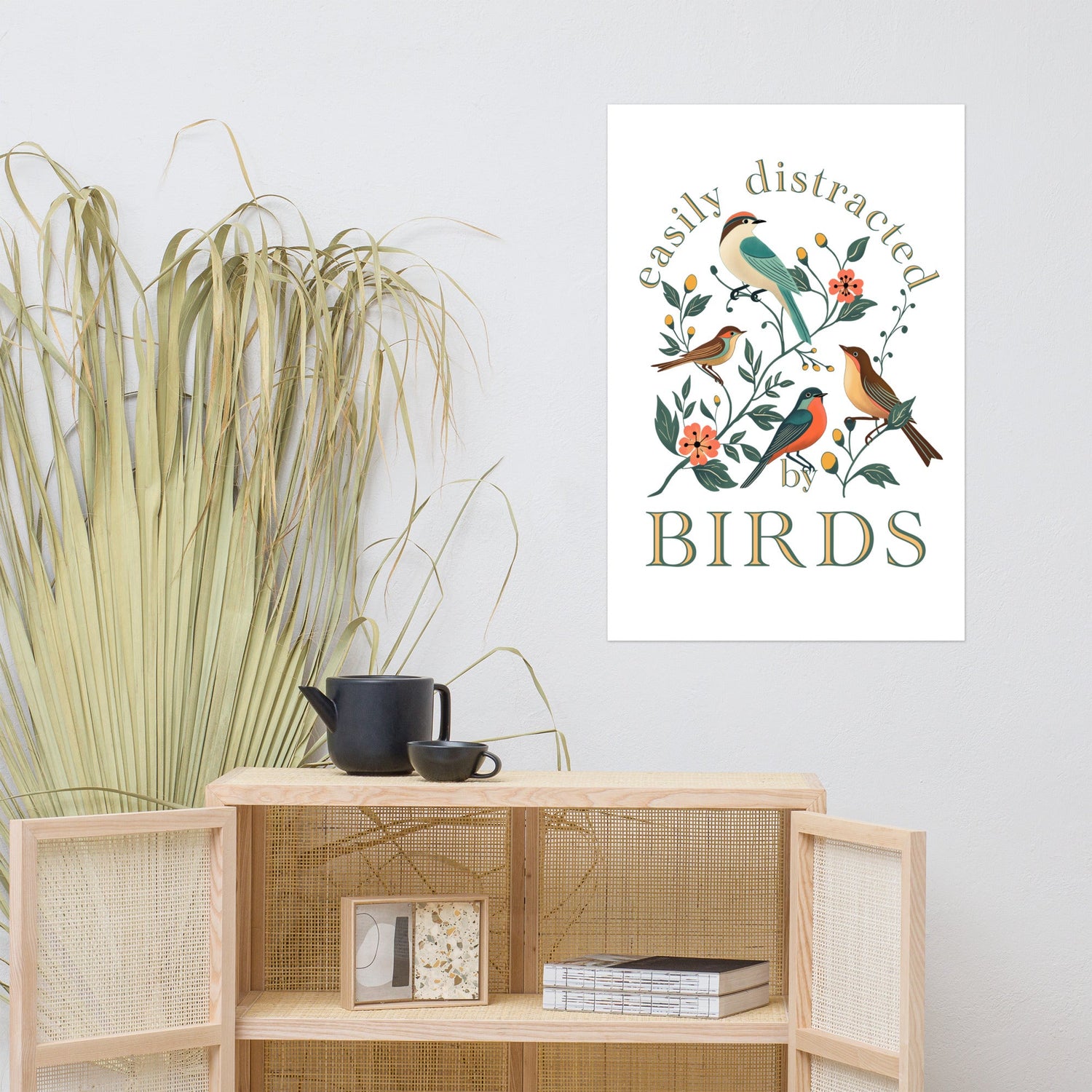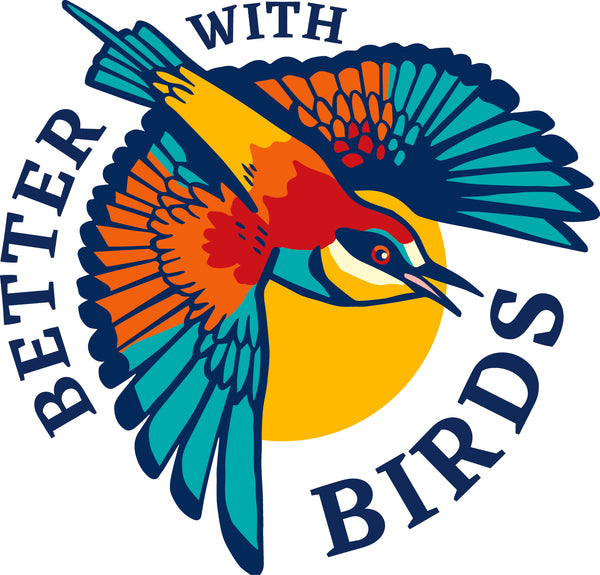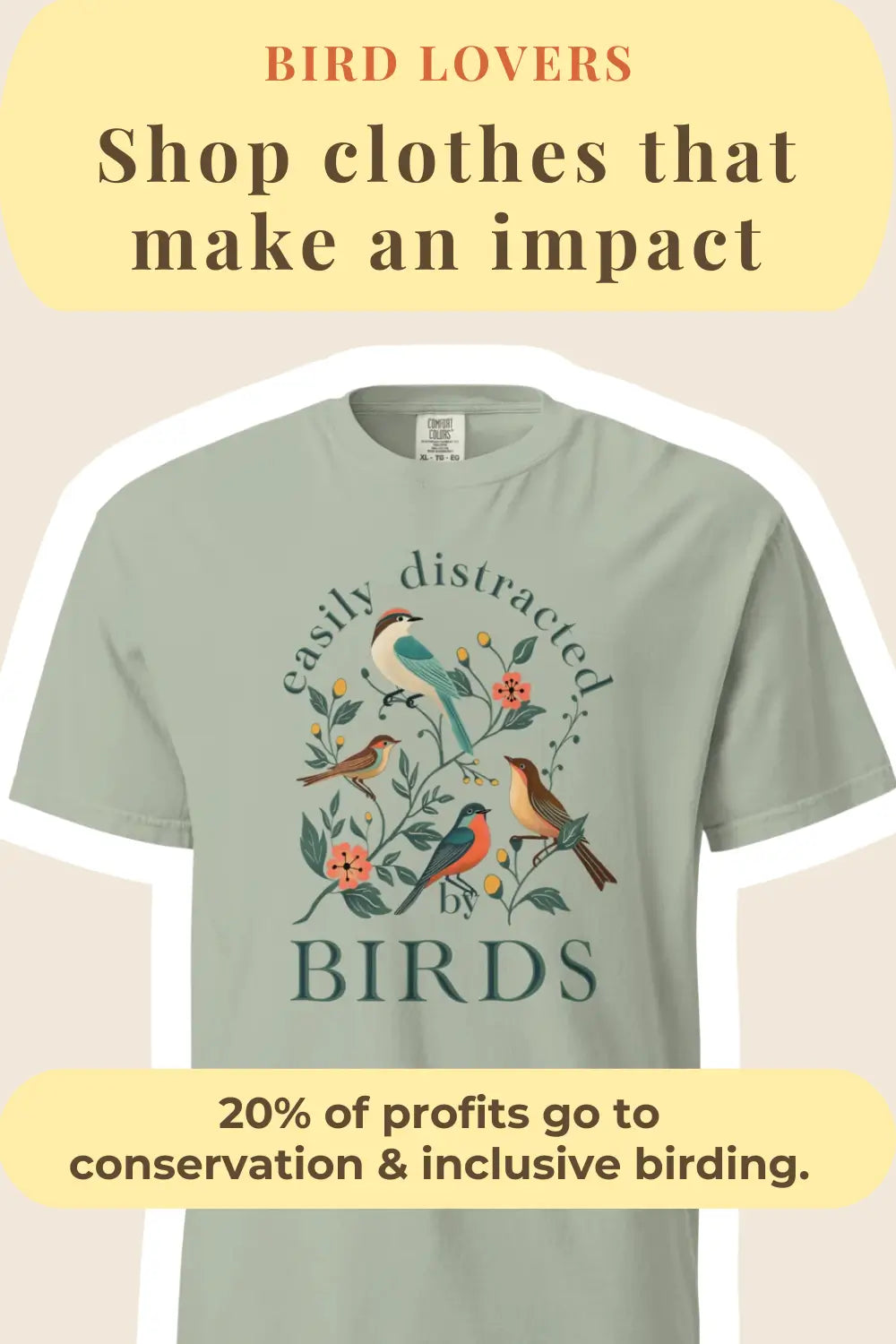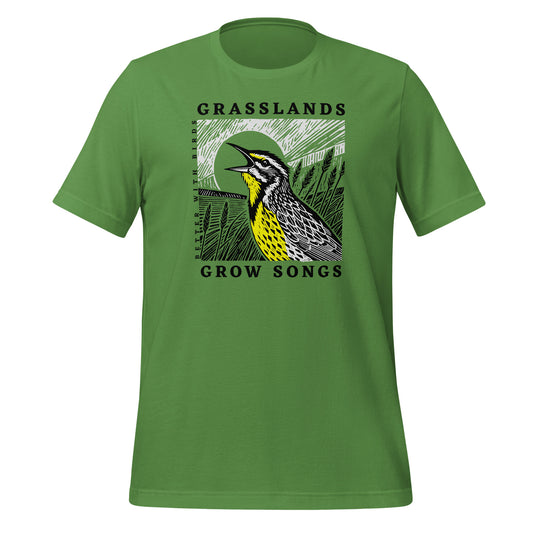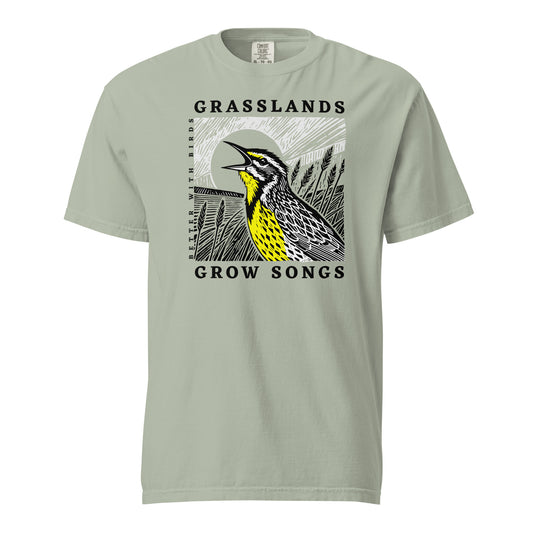Purple Martins: The Complete Guide to Hosting North America’s Most Picky Tenants
Featured Photo: NPF Photography/Shutterstock
Read Time: 7 minutes
Backyard Birding , Attracting Birds , Bird-Friendly Yards
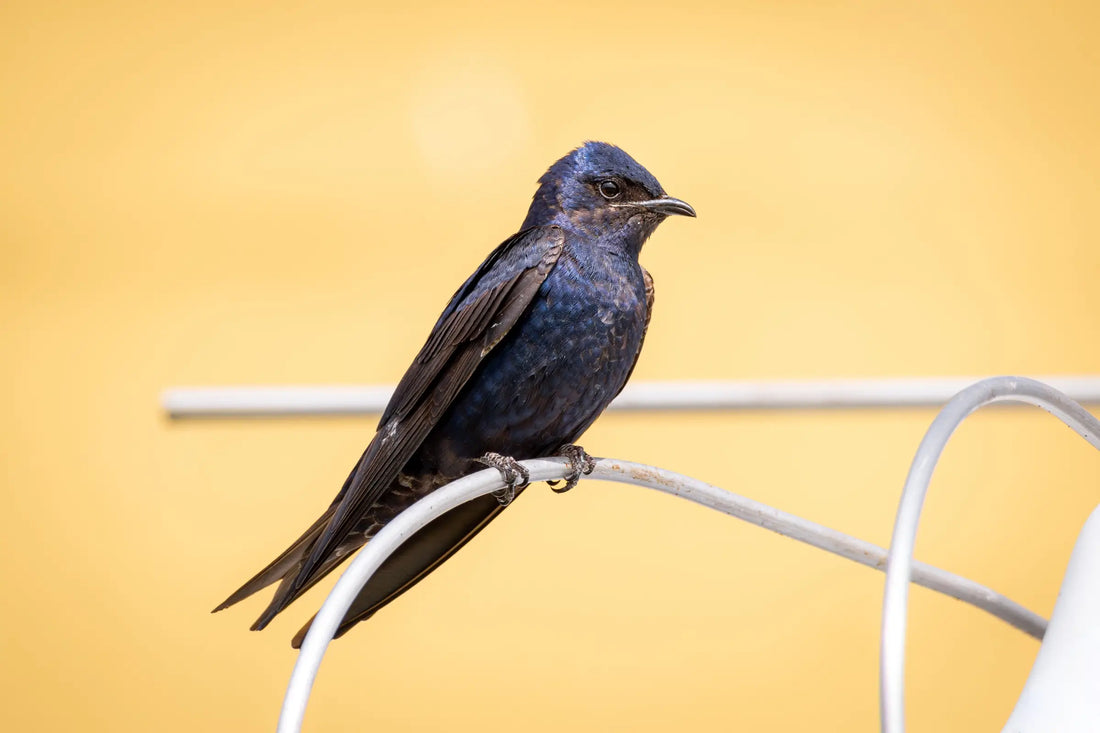
This post contains affiliate links. If you use these links to buy something, we may earn a commission at no additional cost to you. We only recommend products we fully support or use ourselves. Our full disclaimer
PIN THIS FOR LATER
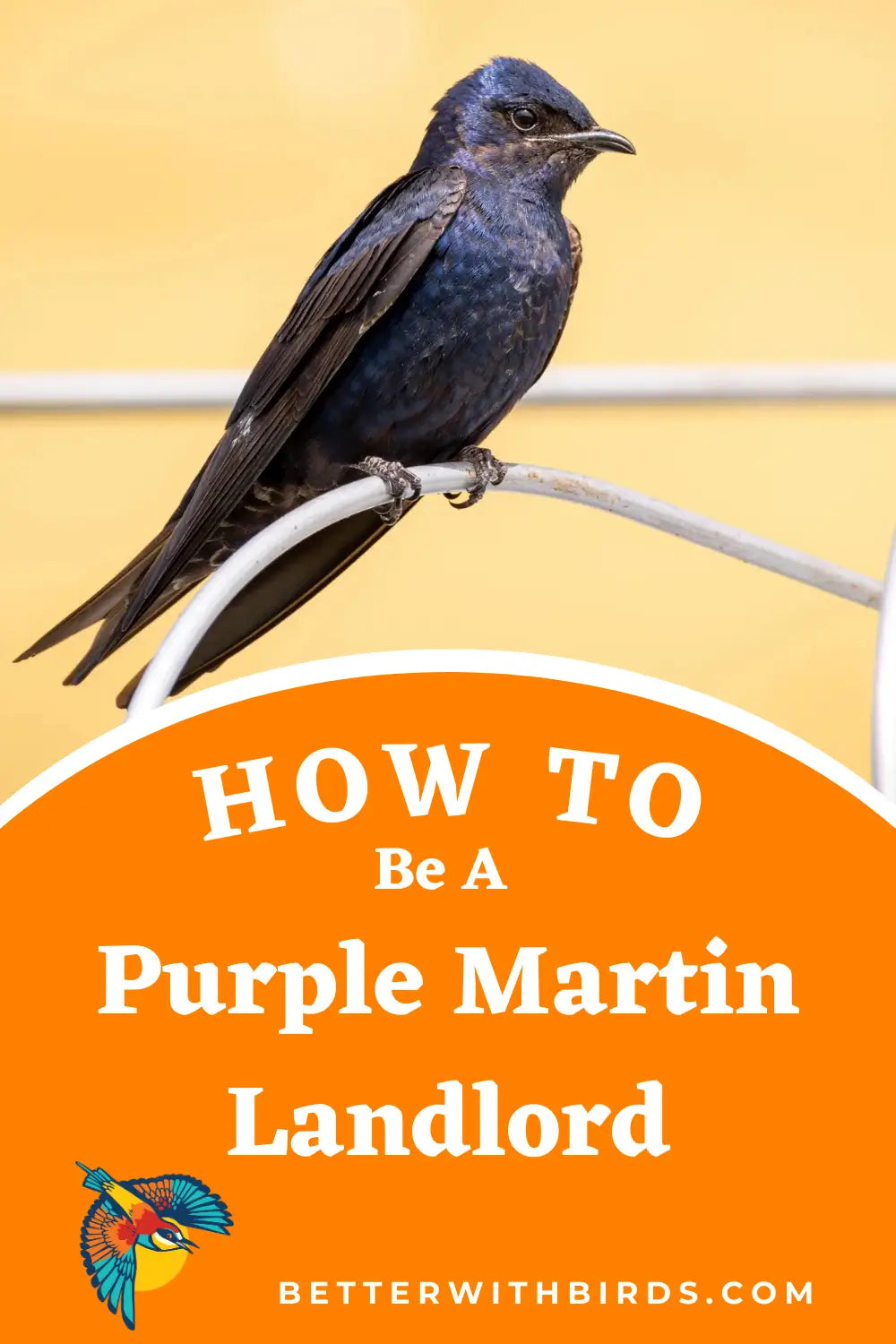
Contents
Thinking about attracting purple martins to your yard? Congrats, you’re on your way to becoming a bird landlord. But don’t let the cute feathers fool you—these birds are basically the picky tenants who read every line of the lease, expect regular maintenance, and might leave if you forget to trim the lawn.
They’re also brilliant aerial acrobats, social butterflies (well, birds), and migratory wonders who’ve been cohabiting with humans for centuries. Native Americans historically used natural gourds to create birdhouses for these birds, and today, modern human-made structures like nest boxes and birdhouses are essential for attracting purple martins. They eat bugs, raise adorable babies, and fill your mornings with soft bubbling chatter that somehow never gets annoying.
This guide is for anyone curious about hosting purple martins—whether you’re brand-new to the idea or knee-deep in gourd catalogs.
Who Are Purple Martins, Really? (Besides a Fancy Name)
Purple martins (Progne subis) are the largest swallows in North America and belong to the swallow family. And no, “martin” isn’t short for anything; it’s just their name, and yes, it sounds like they belong in a Jane Austen novel. They measure around 8 inches long, have a wingspan that can stretch up to 16 inches, and weigh…basically nothing. Like a hefty pencil.
Adult male martins show off with shimmering dark blue-purple feathers that practically glow in the sunlight. Females and juveniles are more understated—greyish with lighter bellies—but still stylish in a no-nonsense kind of way.
These birds are built for speed and precision. They eat on the wing (as in, while flying), darting and weaving mid-air to catch bugs. And they’re loud in the best possible way, filling colonies with gurgles and warbles that sound like what you’d expect from a tiny sci-fi spaceship crew with opinions.
They’re also incredibly social. Purple martins rarely nest solo; they prefer to live in groups, which is why they’re often found in clusters of birdhouses or gourds. If you’re hosting them, you’re not just getting a couple birds—you’re basically signing up for a neighborhood.
We give 20% of all shop profits to bird conservation & inclusive birding efforts.
Where Do Purple Martins Live?
In the summer, purple martins are full-time residents across much of the U.S. and southern Canada. But where exactly they nest depends on which side of the Rockies you’re on:
-
East of the Rockies? East of the Rocky Mountains, purple martins are known to nest in these human-created habitats, emphasizing the importance of specific environments and human involvement in attracting and supporting these songbirds. In other words, you’re their real estate agent. These birds rely almost entirely on human-provided housing—think multi-unit bird condos or gourd mansions mounted on poles.
-
West of the Rockies? They’re a bit more self-sufficient, still nesting in natural cavities like old woodpecker holes or cliff crevices.
They like open areas—fields, meadows, or manicured suburban lawns (told you they were picky). What they don’t like: tree cover, thick brush, or anything that blocks their clear line of flight. Think of them as the “need a clear driveway” type of house hunter.

Purple Martin Migration: A Drama in Three Acts
If purple martins had passports, they’d be full of stamps. These birds are long-distance migrators, traveling up to 5,000 miles between their winter homes in South America and their breeding spots in North America. Purple martins migrate from South America to various parts of North America, including Florida and New England, highlighting their early arrival for the breeding season. Every year. Without GPS.
In New England, purple martins are among the first songbirds to arrive by mid-April, marking the beginning of the breeding season. Their early presence in this northern region is a significant indicator of the changing seasons and the start of springtime activities.
Toward late summer and early fall, purple martins begin their southward migration to their wintering grounds in South America. Monitoring their activities during late summer is crucial for conservation efforts and understanding their behavior as they prepare to leave.
In eastern North America, the migration patterns and breeding habits of purple martins are closely monitored. Preparing nesting sites and keeping track of their arrival times during the spring season is a very big deal for science and conservation as these birds return from their wintering grounds in South America.
Act I: The South American Sojourn
In the off-season, martins chill in the Amazon Basin—Brazil, Bolivia, Peru—the whole tropical vibe. These wintering grounds in South America provide an important refuge where they can rest, eat, and socialize, preparing for the long flight back north. They’re not nesting down there; just recuperating before returning to North America.
Act II: Spring Arrival
Adult males are the first to return—some as early as January in Florida and Texas, but most arrive between March and May, with April being a busy time for their arrival, depending on how far north they’re headed. They scout out housing (yes, literally), claim territory, and wait for the females like it’s bird Tinder but with real estate.
Then come the ladies and younger birds. If your housing is up, clean, and in the right spot, you might just make the guest list.
🕒 Timing tip: Have your martin house up a couple weeks before local arrival dates. Miss the window, and you might be hosting squirrels instead.
Act III: Fall Departure
By late July to early August, the kids have fledged, the colony is buzzing, and everyone’s starting to pack. Martins gather in massive pre-migration roosts—sometimes hundreds of thousands strong—then head south. These purple martins roost in large communal groups, showcasing their social behavior - which is indeed one of the most charming things about these lovely birds. That, and their sheer capability of travel. They often fly straight across the Gulf of Mexico in one shot, because apparently, they like a challenge.

Why Do They Need Human Housing?
Okay, here’s where it gets serious. East of the Rockies, purple martins no longer nest in the wild. That’s not hyperbole—it’s reality.
For centuries, humans have been offering them housing. Native Americans were the first to hang up gourds to attract martins, and over generations, the birds adapted. Breeding purple martins now depend heavily on human-made environments to successfully reproduce. Natural cavities—tree snags, old woodpecker holes—have disappeared due to deforestation, and invasive species like European starlings and house sparrows took over the rest.
So now? It’s you or bust. Without human-provided housing, cavity nesters like purple martins in the eastern U.S. have nowhere to breed. Hosting them isn’t just a fun hobby—it’s a real conservation effort. (But still fun. We promise.)
We give 20% of all shop profits to bird conservation & inclusive birding efforts.
How to Be the Best Martin Landlord on the Block
Hosting purple martins means thinking like a property manager, minus the rent. To attract purple martins,the #1 step is installing purple martin houses (obvs). Here’s what they expect:
Housing Style
- Gourd clusters or multi-compartment houses work best.
- Entrance holes should be 1.75" wide and high enough to deter predators.
Location, Location, Location
- Wide open spaces.
- At least 30-40 feet from trees and buildings.
- Preferably near water, but it’s not a dealbreaker.
Accessibility
- Housing should be mounted on a pole that can raise and lower, so you can check for problems and clean.
Safety Features
- Predator guards are a must (snakes are surprisingly good climbers—don’t ask us how we know).
- Regular monitoring to evict squatters (looking at you, house sparrows and European starlings!) and prevent invasions by other species.
European Starling Control: Keeping the Unwanted Guests Away
European Starlings are like the uninvited guests who crash your party and eat all the snacks. These non-native species are a significant threat to Purple Martin colonies, competing fiercely for nesting sites and sometimes even evicting martins from their homes. To keep these unwanted guests at bay, you’ll need to get a bit crafty with your Purple Martin house.
First, consider using starling-resistant entrance holes. These are typically non-round and designed to make it difficult for starlings to enter, while still being accessible to your martins. Think of it as a VIP entrance that only your feathered friends can use.
Trapping and removing European Starlings is another effective method. The Purple Martin Conservation Association offers excellent guidance on how to do this safely and humanely. By taking these steps, you can help ensure that your Purple Martin house remains a safe haven for these beautiful birds, free from the pesky intrusions of starlings.

Creating a Colony: Building a Purple Martin Community
Creating a Purple Martin colony is like planning a neighborhood block party—you need the right setup, the right location, and a bit of patience. First, you’ll need to install a Purple Martin house in a spot that meets their specific needs. This means full sun, a clear flight path, and ideally, proximity to a water source. Think of it as prime real estate for your new tenants.
Mount your Purple Martin house at the correct height and ensure it’s a good distance from trees and other obstacles. Once your avian apartment complex is ready, it’s time to roll out the welcome mat. Playing a recording of Purple Martin calls or using a decoy bird can help attract these social swallows to their new digs.
With a bit of patience and persistence, you’ll soon have a thriving Purple Martin colony, filling your yard with their delightful chatter and aerial acrobatics.
What Do Purple Martins Eat? (Spoiler: Not Mosquitoes)
They’re aerial insectivores, meaning they only eat flying bugs they can catch in midair. Purple Martins actively eat insects, showcasing their skill in catching them mid-air and contributing to ecological balance by controlling insect populations. Their menu includes:
- Beetles
- Moths
- Flies
- Dragonflies
- A few mosquitoes (but not enough to be your pest control service)
They do not eat seeds, fruit, suet, or mealworms. You won’t find them at a feeder unless they’re desperate, in rehab, or very, very confused.
🍽️ Feeding tip: Just skip the feeder. Focus on keeping your yard pesticide-free and rich in native plants that attract the bugs they like.

Conservation Status: Why They Need You
Purple martins aren’t endangered, but their numbers are declining in many areas. The reasons?
- Habitat loss (bye-bye, old-growth trees)
- Invasive species outcompeting them for nests
- Lack of available, maintained housing
- Changing climate messing with migration timing and food supply
By providing and maintaining housing, you’re not just being a good birdwatcher—you’re supporting important conservation efforts. Community involvement in these initiatives helps ensure the survival and flourishing of purple martins.
And honestly? That’s a pretty excellent legacy for someone who started out just trying to avoid mowing the lawn on weekends.
Should You Host Purple Martins? (Short Answer: Yes, But Know What You’re Signing Up For)
Hosting martins isn’t “set it and forget it.” It’s “check it, clean it, guard it, cheer for baby birds, repeat.” You’ll need:
- Patience (they might not come the first year)
- Consistency (maintenance is key)
- Curiosity (you will become obsessed)
But the payoff? It’s real.
Watching a colony grow, seeing fledglings take their first flight, hearing that bubbly chatter fill your yard—it’s hard to beat. And you’ll officially earn your badge as a birding badass who made a difference.
Ready to Get Started?
We’ve got you:
